Clancy Tucker's Blog, page 161
February 13, 2018
14 February 2018 - THE HISTORY OF VALENTINE'S DAY

THE HISTORY OF VALENTINE'S DAY
G'day guys,
They tell me that today is a special day for lovers, and that folks get cards, flowers and chocolates from loved ones. Mm ... Better check my letterbox.
But seriously, here are some facts behind this celebrated day.
Every February 14, across the United States and in other places around the world, candy, flowers and gifts are exchanged between loved ones, all in the name of St. Valentine. But who is this mysterious saint, and where did these traditions come from? Find out about the history of this centuries-old holiday, from ancient Roman rituals to the customs of Victorian England.
The Legend of St. Valentine
The history of Valentine’s Day–and the story of its patron saint–is shrouded in mystery. We do know that February has long been celebrated as a month of romance, and that St. Valentine’s Day, as we know it today, contains vestiges of both Christian and ancient Roman tradition. But who was Saint Valentine, and how did he become associated with this ancient rite?
The Catholic Church recognizes at least three different saints named Valentine or Valentinus, all of whom were martyred. One legend contends that Valentine was a priest who served during the third century in Rome. When Emperor Claudius II decided that single men made better soldiers than those with wives and families, he outlawed marriage for young men. Valentine, realizing the injustice of the decree, defied Claudius and continued to perform marriages for young lovers in secret. When Valentine’s actions were discovered, Claudius ordered that he be put to death.
Other stories suggest that Valentine may have been killed for attempting to help Christians escape harsh Roman prisons, where they were often beaten and tortured. According to one legend, an imprisoned Valentine actually sent the first “valentine” greeting himself after he fell in love with a young girl–possibly his jailor’s daughter–who visited him during his confinement. Before his death, it is alleged that he wrote her a letter signed “From your Valentine,” an expression that is still in use today. Although the truth behind the Valentine legends is murky, the stories all emphasize his appeal as a sympathetic, heroic and–most importantly–romantic figure. By the Middle Ages, perhaps thanks to this reputation, Valentine would become one of the most popular saints in England and France.

Origins of Valentine’s Day: A Pagan Festival in February
While some believe that Valentine’s Day is celebrated in the middle of February to commemorate the anniversary of Valentine’s death or burial–which probably occurred around A.D. 270–others claim that the Christian church may have decided to place St. Valentine’s feast day in the middle of February in an effort to “Christianize” the pagan celebration of Lupercalia. Celebrated at the ides of February, or February 15, Lupercalia was a fertility festival dedicated to Faunus, the Roman god of agriculture, as well as to the Roman founders Romulus and Remus.
To begin the festival, members of the Luperci, an order of Roman priests, would gather at a sacred cave where the infants Romulus and Remus, the founders of Rome, were believed to have been cared for by a she-wolf or lupa. The priests would sacrifice a goat, for fertility, and a dog, for purification. They would then strip the goat’s hide into strips, dip them into the sacrificial blood and take to the streets, gently slapping both women and crop fields with the goat hide. Far from being fearful, Roman women welcomed the touch of the hides because it was believed to make them more fertile in the coming year. Later in the day, according to legend, all the young women in the city would place their names in a big urn. The city’s bachelors would each choose a name and become paired for the year with his chosen woman. These matches often ended in marriage.
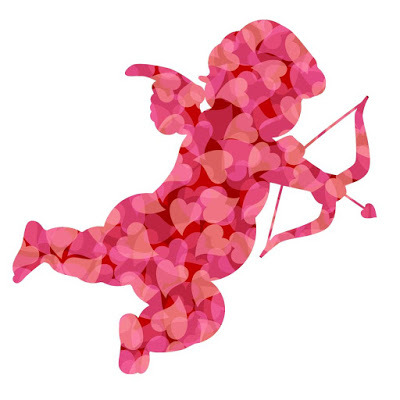
Valentine’s Day: A Day of Romance
Lupercalia survived the initial rise of Christianity and but was outlawed—as it was deemed “un-Christian”–at the end of the 5th century, when Pope Gelasius declared February 14 St. Valentine’s Day. It was not until much later, however, that the day became definitively associated with love. During the Middle Ages, it was commonly believed in France and England that February 14 was the beginning of birds’ mating season, which added to the idea that the middle of Valentine’s Day should be a day for romance.
Valentine greetings were popular as far back as the Middle Ages, though written Valentine’s didn’t begin to appear until after 1400. The oldest known valentine still in existence today was a poem written in 1415 by Charles, Duke of Orleans, to his wife while he was imprisoned in the Tower of London following his capture at the Battle of Agincourt. (The greeting is now part of the manuscript collection of the British Library in London, England.) Several years later, it is believed that King Henry Vhired a writer named John Lydgate to compose a valentine note to Catherine of Valois.
Typical Valentine’s Day Greetings
In addition to the United States, Valentine’s Day is celebrated in Canada, Mexico, the United Kingdom, France and Australia. In Great Britain, Valentine’s Day began to be popularly celebrated around the 17th century. By the middle of the 18th, it was common for friends and lovers of all social classes to exchange small tokens of affection or handwritten notes, and by 1900 printed cards began to replace written letters due to improvements in printing technology. Ready-made cards were an easy way for people to express their emotions in a time when direct expression of one’s feelings was discouraged. Cheaper postage rates also contributed to an increase in the popularity of sending Valentine’s Day greetings.
Americans probably began exchanging hand-made valentines in the early 1700s. In the 1840s, Esther A. Howland began selling the first mass-produced valentines in America. Howland, known as the “Mother of the Valentine,” made elaborate creations with real lace, ribbons and colorful pictures known as “scrap.” Today, according to the Greeting Card Association, an estimated 1 billion Valentine’s Day cards are sent each year, making Valentine’s Day the second largest card-sending holiday of the year. (An estimated 2.6 billion cards are sent for Christmas.)Women purchase approximately 85 percent of all valentines.
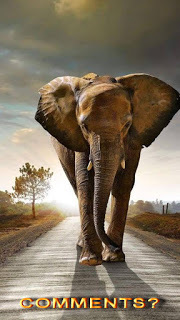
Clancy's comment: Well, I checked the letterbox. Nothing! Mm ... I thought ya loved me.
I'm ...


Published on February 13, 2018 11:06
February 12, 2018
13 February 2018 - JOHN WILKES BOOTH
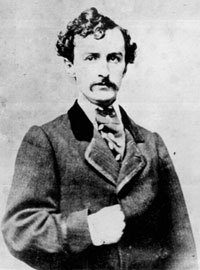
JOHN WILKES BOOTH
G'day folks,
Welcome to some details about an assassin. Despite his success as an actor on the national stage, John Wilkes Booth will forever be known as the man who assassinated President Abraham Lincoln.
Booth, a native of Maryland, was a fierce Confederate sympathizer during the Civil War. Before the fateful night at Ford’s Theatre, he had conspired to kidnap Lincoln and hide him until all Confederate prisoners were released. On April 14, 1865, Booth entered the theater’s balcony, shot Lincoln at close range and immediately fled the scene. After a 12-day manhunt, Booth was tracked down and killed by Union soldiers.
The celebrated actor Junius Brutus Booth immigrated to the United States from England in the early 1820s and settled his family in Harford County, Maryland, where the ninth of his 10 children, John Wilkes, was born on May 10, 1838. In 1846, it was revealed that Junius Booth had neglected to divorce his first wife before eloping with his second, Mary Ann, 25 years before. The scandal made an impression on young John Wilkes, who was fiercely proud of his illustrious family name.
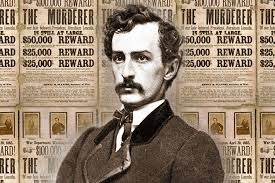
After his father’s death in 1852, Booth left his studies at the prestigious military school St. Timothy’s Hall. In 1855, he followed his older brothers, Junius Jr. and Edwin, into the acting profession, making his debut in Shakespeare’s Richard III at the Charles Street Theatre in Baltimore. Booth worked for a year at a Philadelphia theater before moving to the Marshall Theatre in Richmond, Virginia, where he became known for his dark good looks, his intensely physical, almost acrobatic, performances and his popularity with women.
In October 1859, Booth–who, like many Marylanders, supported slavery–was shocked and galvanized by the abolitionist John Brown’s bloody raid on Harper’s Ferry, Virginia. Booth briefly enlisted in the Richmond militia and witnessed Brown’s hanging in December. That summer, he signed on as the leading man in a touring theater company. Booth was about to take on the part of Hamlet in October 1860 when he accidentally shot himself in the thigh with a co-star’s pistol. Abraham Lincoln was elected president one month later, and Booth watched the South move toward secession while recuperating in Philadelphia.
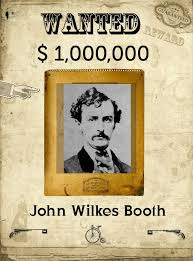
Shortly after the outbreak of the Civil War, Lincoln declared martial law in Maryland as part of an effort to keep the state from seceding. Angry and frustrated, Booth nonetheless promised his mother he would never enlist in the Confederate Army. He continued his acting career, drawing crowds and impressing critics from St. Louis to Boston. In November 1863, he performed in The Marble Heart at Washington’s Ford’s Theatre. In the audience were President and Mrs. Lincoln. It was the only time Lincoln would see Booth perform.
In late May 1864, Booth invested in an oil company in western Pennsylvania. After seeing no immediate profit, he backed out of the operation, losing most of his savings. By that time, he had already begun working on his conspiracy to kidnap Lincoln. He performed less and less frequently, and by late 1864 had gone into debt. Booth attended Lincoln’s second inaugural in early March with his secret fiancée Lucy Hale, the daughter of an abolitionist New Hampshire senator. In what would be his last performance, Booth appeared in front of a full house at Ford’s in The Apostate on March 28, 1865.
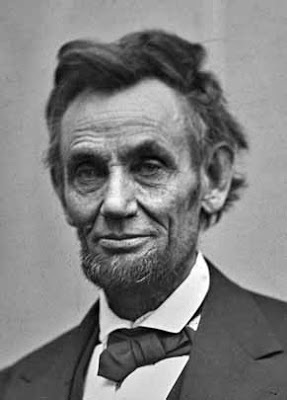

Less than a week later, Confederate forces evacuated Richmond, and within two weeks, General Robert E. Lee surrendered his troops. As Washington exploded in celebration, Booth attended another Lincoln speech on April 11, reacting strongly to Lincoln’s suggestion that he would pursue voting rights for blacks. Booth angrily told his co-conspirator, Davy Herold: “Now, by God, I’ll put him through.” Three days later, at Ford’s Theatre, John Wilkes Booth made good on his word.
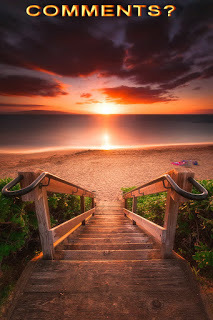
Clancy's comment: Yet another person who has slain someone famous.
I'm ...


Published on February 12, 2018 11:42
February 11, 2018
12 February 2018 - THE AFRICAN TREE TOAD
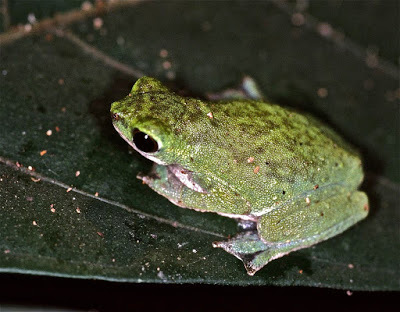
THE AFRICAN TREE TOAD
G'day folks,
Welcome to some facts about one of the tiny creatures that roam the earth.
The African Tree Toad is a small species of Toad found in the forests of Central Africa. Today, little is still known about this tiny amphibian and the constantly decreasing population numbers of the African Tree Toad are making it increasingly difficult for us to learn more about them. There are two known subspecies of the African Tree Toad, which are the African Tree Toad and the Bates' Tree Toad. Both African Tree Toad species are of similar sizeand colourbut tend to differ in the geographical regions they inhabit.

The African Tree Toad is generally dark to light brown in colour, with white patches on its belly and like other Toad species, the African Tree Toad has specially designed feet which aid its semi-aquatic and tree climbing lifestyle. The African Tree Toad is a terrestrialanimaland uses it' s toes to also help it to hop about on the ground. The toes of the African Tree Toad are long and thin, with sticky, round discs on the tips. These widely spread digits enable this Toad to grip onto a larger surface area. The tiny striped body of the African Tree Toad grows up 3.8cm in length making these animalsparticularly hard to spot amongst the debris on the forest floor.
The African Tree Toad is said to be distributed across its natural Central African range in countries such as Cameroon, Democratic Republic of the Congo, Equatorial Guinea, Gabonand Nigeria. Despite this though, there are very few records of this elusive amphibian meaning that much of its distribution (and indeed population size) is simply presumed. The natural habitat of the African Tree Toad is subtropical or tropical moist, lowland forests and heavily degraded former forest, where there is a plentiful water supply. Today however, the African Tree Toad is generally restricted to taller forests.

Like other Toads, the African Tree Toad is a semi-aquatic animal, although it is most commonly found in water when the female is laying her eggs. In a similar way to other tropical Toads, the African Tree Toad spends much of its life walking, hopping or running about on the ground where it is able to find plenty of food and water. When darkness falls however, the African Tree Toad retreats high into the surrounding vegetation to remain safe during the night from ground-dwelling predators. The colourand markings of their skin, gives the African Tree Toad camouflageamongst the surrounding forest, again giving it extra defence from hungry predators.
Little is really known about the reproductionof the African Tree Toad besides the fact that female African Tree Toads are known to lay up to 200 sticky eggs in small bodies of water found in hollow tree cavities. These spawning sites are then guarded by the male African Tree Toad until the tiny eggs hatch into tadpoles. It is unknown what the tadpoles feed on, but once developed, they hop out of their watery nest in the tree and begin hunting for food in the forest. African Tree Toads in captivity usually live until they are three or four years old but nothing is known about their lifespan in the wild.
The African Tree Toad is a carnivorous amphibian that shoots its long, sticky tongue out of its mouth at incredible speeds to catch and secure its prey. This also helps the Toad to hold onto its catch whilst it is trying to eat it. The African Tree Toad primarily hunts small invertebratesincluding Insects, Worms and Spiders that scuttle amongst the debris on the forest floor. In a similar way to other Toad species, it is thought that the African Tree Toad sits in silence, waiting for lunch to pass by, before catching it with lighting speed.

Due to its small size, the African Tree Toad is believed to have numerous predatorswithin its warm and wet, woodland environment. Fish, Birds, Lizards, Snakes, rodents and other, larger amphibians like Frogsand Toads are all thought to be common predatorsof the African Tree Toad. The largest assumed threat to the African Tree Toad is habitatloss in the form of deforestation and, to a lesser extent, both air and water pollution in their natural habitats. Little is known however about the direct affects of habitatloss on the speciesas a whole.
Very little is known about the African Tree Toad, as only a handful of records exist throughout its very limited range, and there are in fact no records that confirm its existence through much of its so-called natural habitat. It is simply just assumed that the African Tree Toad exists in these areas.

Clancy's comment: Cute, but I wonder how long it will be on earth?
I'm ...

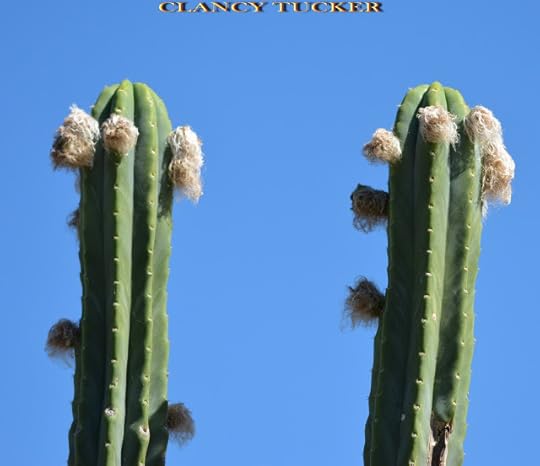
Published on February 11, 2018 11:22
February 10, 2018
11 February 2018 - Prehistoric High-Rise Apartment Complex In Arizona
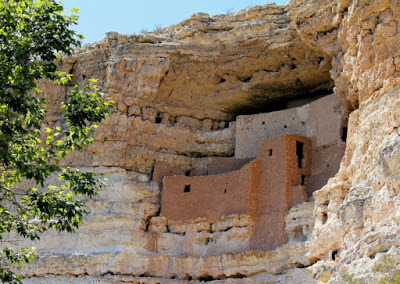
Prehistoric High-Rise Apartment Complex In Arizona G'day folks,Wow, this post might surprise you. It staggered me.
They call it the Montezuma Castle, but the 90ft high monument should never have been named that. The thing is, the Aztec emperor who the ruins were named after, Montezuma, mistakenly believed to have been connected to their construction, was not even born until the cliff dwellings had already been abandoned for several decades.
The European-Americans who re-discovered the ruins near Camp Verde in Arizona during the Civil War, also christened it a “castle”, but that wasn’t right either. In fact, modern research has revealed that these ancient cliff dwellings functioned more like a “prehistoric high-rise apartment complex”.
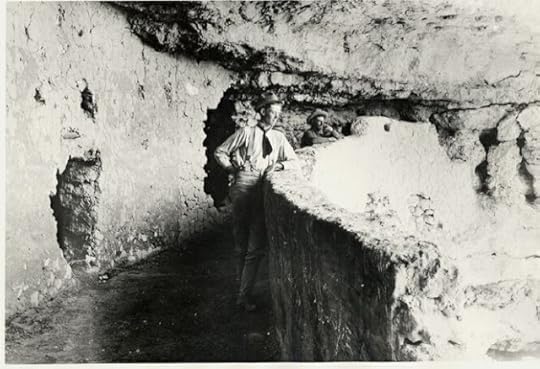
Built over the course of three centuries by the Sinagua people, a pre-Columbian civilization closely related to indigenous peoples of the southwestern United States, they were lived in between approximately 1100 and 1425 AD, over five stories in twenty rooms overlooking the desert.

It’s still in great shape, one of the best-preserved cliff dwellings in North America in fact, despite having been abandoned more than 600 years ago. The reason for its abandonment remains a mystery, although theories include the running out of agricultural resources, prolonged drought, or conflict with other tribes. It’s believed the Sinagua later merged with other tribes to the north and the Hopi tribes of today believe they are their descendants.

The height and scale of the dwelling carved out of sheer limestone cliff, indicates the Sinagua were daring but highly skilled engineers. The structure would likely have been accessed by a series of ladders, creating a natural defence against intruders as well as annual flooding of the adjacent Beaver Creek.

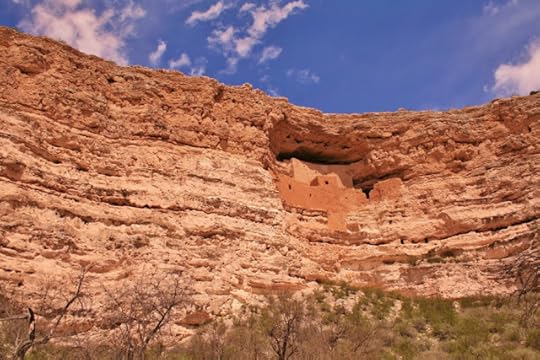
Once residents reached their dwelling, they had almost 4,000 square feet of floor space to make themselves at home.
Unfortunately, due to heavy looting in the late 19th and early 20th centuries, very few original artifacts survive from the ill-named Montezuma Castle. It was declared a U.S. National Monument in 1906, however access to the interior of the ruins has not been allowed since 1951 due to concerns about visitor safety and damage to the dwelling.

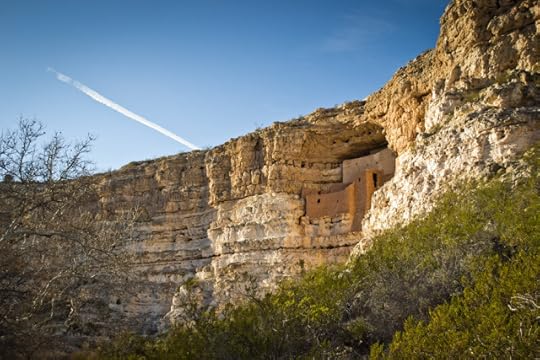
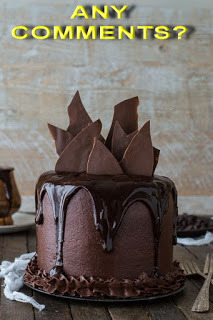
Clancy's comment: Wow,these discoveries fascinate me. Definitely, 'Room with a view'. However, I'm not so sure that the original inhabitants used a ladder system. I think they were smarter than that, and somewhere in years to come, they might find a secret entrance.I'm ...


Published on February 10, 2018 13:13
February 9, 2018
10 February 2018 - FABULOUS QUOTES WORTH READING

FABULOUS QUOTESWORTH READING
G'day folks,
Welcome to some top quotes worth reading.


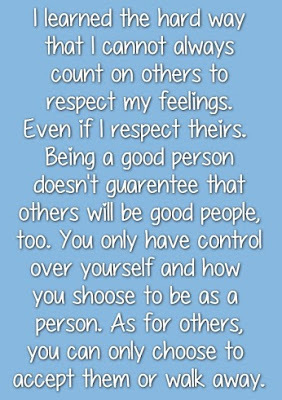
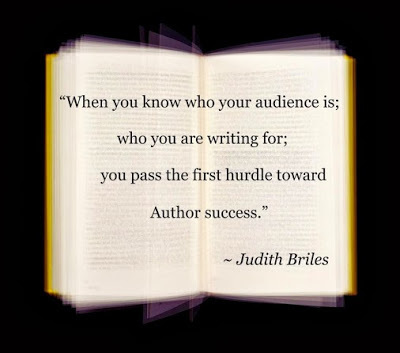

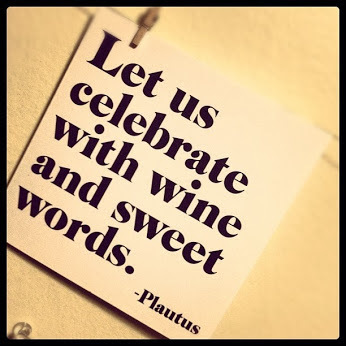
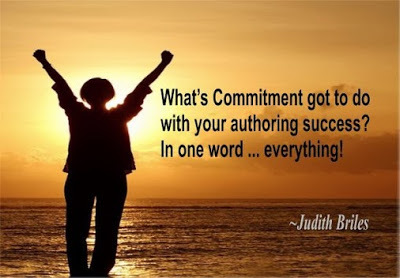
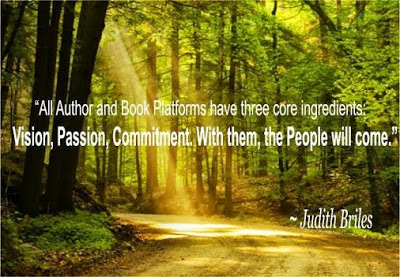


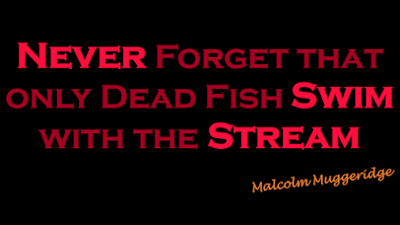


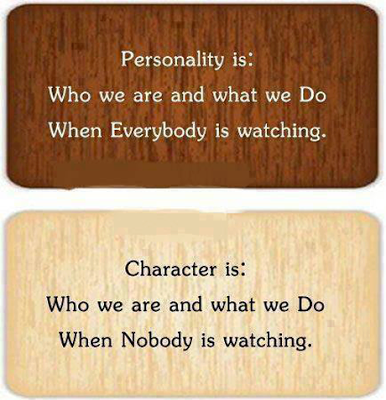
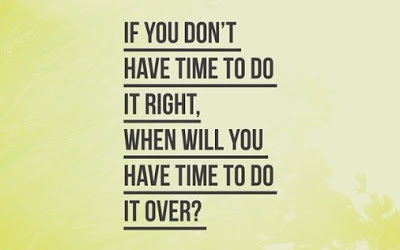
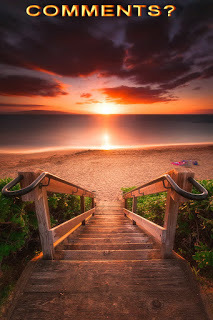
Clancy's comment: I like the arrowed comment above.
I'm ...


Published on February 09, 2018 11:39
February 8, 2018
9 February 2018 - LUKE MURPHY - GUEST AUTHOR
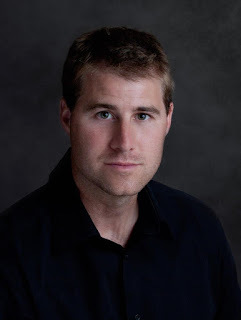
LUKE MURPHY- GUEST AUTHOR -
G'day folks,
Today, I welcome a guest I have previously hosted on my blog. In fact, Luke was one of my first guests some six and a half years ago. Luke is an author from Canada, and he provides some interesting responses to my questions.
Welcome, Luke ...
1. TELL US A LITTLE ABOUT YOURSELF AND YOUR WRITING JOURNEY.
Actually my writing happened by accident. Growing up I never thought much about writing, but I was an avid reader. The only time I ever wrote was when my teachers at school made me. I wanted to be an NHL superstar…period.
It was the winter of 2000, my second year of professional hockey, and I was playing in Oklahoma City. After sustaining a season ending eye injury (one of the scariest moments of my life), I found myself with time on his hands.
My girlfriend at the time, who is now my wife, was attending a French college in Montreal. She received an English assignment to write a short story, and asked me for some help.
I loved the experience—creating vivid characters and generating a wire-taut plot. So, I sat down at my roommate’s computer and began typing. I wrote a little every day, around my intense rehabilitation schedule and before I knew it I had completed my first manuscript.
I didn’t write with the intention of being published. I wrote for the love of writing.
Twelve years later, I still write for pleasure—and I still love it! The fact that I am being published is a bonus.
I made the decision to write a book with the intention of publication in 2005. I enjoyed writing so much as a hobby, I decided I wanted to take my interest one step further – write a story with the intention of being published and making it available for friends, family, and readers around the world to enjoy. I`m not one to take things lightly or jump in half way. I took a full year off from writing to study the craft. I constantly read, from novels in my favorite genres to books written by experts in the writing field. I continually researched on the internet, reading up on the industry and process. I made friends (published and unpublished authors), bombarding them with questions, learning what it took to become successful.
Feeling that I was finally prepared, in the winter of 2006, with an idea in mind and an outline on paper, I started to write DEAD MAN`S HAND. It took me two years (working around full time jobs) to complete the first draft of the novel.
I then worked with editors and joined a critique group, doing anything I could to learn, to improve my writing and my novel to point where I could create the best possible work.
My years of hard work finally paid off. With my dream still in mind and my manuscript ready, I hired the Jennifer Lyons Literary Agency to represent DEAD MAN`S HAND.
I signed a publishing deal with Imajin Books in May, 2012.
Since that time, I’ve had two other novels published, including a sequel to my first book.
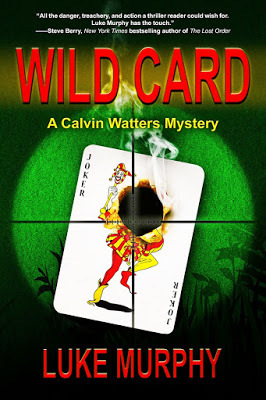
2. WHAT TYPE OF PREPARATION DO YOU DO FOR A MANUSCRIPT? DO YOU PLAN EVERYTHING FIRST OR JUST SHOOT FROM THE HIP?
I started writing when I was young and playing professional hockey. A couple of hours a day on the ice and in the gym and then the day was mine. I also suffered a serious eye injury and couldn`t play, so I had a lot more time on my hands. Now that I`m older, with a family and full time job, makes it a lot harder to find the time to write.
These days I don`t have a schedule or routine. But when I do write, I find that I am most productive in the morning, and I always have to have a mug of steaming tea in front of me.
Before I even sit down at a computer, I have hand-written notes of ideas for my book. This could be anything from plot, scenes, setting, characters, etc.
Once I sit down, I just write. No editing, no looking back, I just let it flow. Unless I`m certain, no title until after I`m done. As I write, I keep notes by hand on the timeline.
When my first draft is complete, I go through it twice, once for the creative editing process and the next for flow, repetition, etc. Then I have two trusted editors look it over. I’ve been using these editors for a long time, with all of my novels.
For me, the most difficult thing about writing has nothing to do with actual writing (ideas, flow, writer`s block, etc.), but it`s finding the time.
3. WHAT DO YOU ENJOY MOST ABOUT BEING A WRITER?
What I enjoy most about writing is that it allows me, for a short time, the freedom to leave my everyday world and explore new avenues, to be in another place and time. It allows me to get inside the head of characters—to think, do, and say whatever I want with no rules or restrictions. It means liberty and freedom to express myself.
4. WHAT IS THE HARDEST THING ABOUT BEING A WRITER?
For me, the most difficult thing about writing has nothing to do with actual writing (ideas, flow, writer`s block, etc.), but it`s finding the time.
Between teaching, tutoring and reffing, with three small children and a wife at home, finding the time to sit down at a computer and have serious, quality writing time is almost impossible.
But I love my girls and spending quality time for them is a great feeling. It just puts writing my next novel behind a bit.
5. WHAT WERE YOU IN A PAST LIFE, BEFORE YOU BECAME A WRITER?
I always say I write because I can’t sing or dance (LOL). Writing isn’t my full time job, I would have starved long ago if it was.
Growing up I always wanted to be an NHL superstar. Injuries and age limited that dream to only 4 games with the Florida Panthers in 1999, but I spent 6 years bouncing around the minor leagues and loved it.
Now, I’m an elementary school teacher, I tutor Math and English part time and I’m a husband and father. So as you can see, I only write when I find time.
6. WHAT IS YOUR GREATEST WRITING ACHIEVEMENT?
That’s an easy one…having a novel published.
7. WHAT ARE YOU WORKING ON AT THE MOMENT?
I’ve just released my third book, the second in the Calvin Watters series.
I would love to write another book. Right now, I have a full time job (teaching), a part-time tutoring job, a part time hockey ref job, and three small children (all girls, YIKES!!).
I don`t have much time to write, but when I get a chance, I do all I can. It could take some time, but I would love to continue the Calvin Watters series. I’d also like to write a second Charlene Taylor novel. Okay, now I’m getting way ahead of myself LOL.
8. WHAT INSPIRES YOU?
As for inspirations, I never thought much about writing when I was growing up. But I was always an avid reader, which I owe to my mother. She was a librarian, and although I lost her when I was young, I will always remember a stack on Danielle Steele books on her bedside table, and a lot of books lying around the house at my disposal.
My first chapter books were the Hardy Boys titles, so they are the reason I love mysteries. As an adult, some of my favorite authors are Harlan Coben, Michael Connelly and Greg Iles, so naturally I write what I love to read – mystery/suspense novels.
Plot: I get my ideas from stories I hear about, whether through reading (newspapers, magazines, etc.), what I hear (radio) or what I see (TV, movies, internet, etc.). The plots are completely fictional. I wouldn`t say that one thing or person influences my writing, but a variety of my life experiences all have led to my passion in the written word. There is not a single moment in time when ideas come to me, they just stay with me for a while. The internet also provides a wealth of information, available at our fingertips with a click of the mouse.
Setting: I usually set my stories in cities I`ve visited and fell in love with. Las Vegas was the perfect backdrop for this story, glitz and glamour as well as an untapped underground.
Characters: I have never been involved in a homicide investigation, LOL. Although I am not a 6’5”, 220 pound African-American, I’ve used much of my athletic background when creating my protagonist Calvin Watters. Watters past as an athlete, and his emotional rollercoaster brought on by injuries were drawn from my experiences. His mother died of cancer when he was young, as mine was. There are certainly elements of myself in Calvin, but overall, this is a work of fiction. I did not base the characters or plot on any real people or events. Any familiarities are strictly coincidence.
9. WHAT GENRE DO YOU WRITE?
My first chapter books were the Hardy Boys titles, so they are the reason I love mysteries. As an adult, some of my favorite authors are Harlan Coben, Michael Connelly and Greg Iles, so naturally I write what I love to read – mystery/suspense novels. My novels have been compared to James Patterson books, which to me is an honour. Maybe in style (short chapters, a quick read), as I have read many of his books.
10. DO YOU HAVE ANY TIPS FOR NEW WRITERS?
Get a part-time job to pay the bills (haha). Just kidding. Honestly, for anyone who wants to be a writer, you need to have three things: patience, determination and thick skin. You can`t let anyone or anything get in the way of your ultimate goal. You will hear a lot of “no`s”, but it only takes one “yes”. The writing industry is a slow-moving machine, and you need to wait it out. Never quit or give up on your dreams.
11. DO YOU SUFFER FROM WRITER’S BLOCK?
I have never suffered from writers block, or I should say that I have never been affected by it. Since writing is not my full time job, and it’s more of a hobby for me, if I’m ever sitting at the computer and drawing a blank, I just get up, shut off the computer, and walk away…live to fight another day. If the next day the same thing happens, then I walk away again. For this reason, I never give myself deadlines or WIP challenges
12. DO YOU HAVE A FAVOURITE WRITING PLACE?
When I decided to write seriously, my wife and I made me a little office in our house to write. I have a desk, chair, computer and printer set up upstairs, at the end of the hall. Everything a writer needs to succeed
13. WHO IS YOUR FAVOURITE AUTHOR AND WHY?
I have many favourite authors, as I’ve been reading a long time. But my top 3 are probably Harlan Coben, Greg Iles and Michael Connelly. They are all gifted storytellers and masters of suspense.

14. WHAT’S THE GREATEST COMPLIMENT YOU EVER RECEIVED FROM A READER?
I’ve been very fortunate to have many 5-star reviews from not only readers on Amazon, but also from bestselling authors. I think that receiving these review blurbs from peers in my field has been fulfilling. Certainly when someone compares me to a successful, bestselling author is a huge compliment to me. This one felt great:
“All the danger, treachery, and action a thriller reader could wish for. Luke Murphy has the touch.”—Steve Berry, New York Times bestselling author of The Lost Order
15. WHAT WAS THE WORST COMMENT FROM A READER?
I have received a couple of 2-star reviews, but to be honest, they were actually pretty nice 2-star reviews. More comments like, “it wasn’t for me” or “thought it was a Western”. So I can’t complain so far.
16. OTHER THAN WRITING, WHAT ELSE DO YOU LOVE?
Family, friends, BBQs, golf, hockey, reading
17. DID YOU HAVE YOUR BOOK / BOOKS PROFESSIONALLY EDITED BEFORE PUBLICATION?
Yes I did, as I do for all my books. I have two trusted editors that I have used for all of my books, before I send them off to my publisher’s editors.
18. DESCRIBE YOUR PERFECT DAY.
Spending the day with my wife and children is always a pretty perfect day. But if you’re talking about writing, it would be this:
I wake up and cook breakfast for my wife and girls. Then I would kiss my wife goodbye as she goes to work, and take my children to day care. When I get home, I would boil water and start the computer. I would make a hot cup of tea and head upstairs to my office. My dog would be sleeping in his bed placed beside my desk, and I would hear his soft snores as I type away at my next book. Then I would have supper ready for when my girls get home.
19. IF YOU WERE STUCK ON A DESERT ISLAND WITH ONE PERSON, WHO WOULD IT BE? WHY?
Tough question.
The smart answer: My wife (I would want to spend the remaining days of my life with the woman I love). Just in case she reads this. LOL.
Or
Wyatt Earp (can you imagine the stories he would have to tell)
Or
Natalie Portman - for obvious reasons J
20. WHAT WOULD YOU SAY IF YOU HAD THE CHANCE TO SPEAK TO WORLD LEADERS?
What the hell is this world coming to?
21. WHAT ARE YOUR PLANS FOR THE FUTURE?
Just to be happy. I don’t ask much out of life. I want to be able to support my family, give them everything they want and need. I want them to be happy and satisfied.
I’d love to write more books.
22. WHAT FIVE BOOKS WOULD YOU TAKE TO HEAVEN?
Ouch, wow, that is tough. There are so many great books that I like. Let’s see…
Anything by the following authors:
Greg Iles, Michael Connelly, James Patterson, Linwood Barclay, Thomas Perry, and more…..
23. DO YOU SEE YOURSELF IN ANY OF YOUR CHARACTERS?
Many people have asked if I can make any real connections to my Calvin Watters. The answer, as for my connection…no, I have never been involved in a homicide investigation, LOL. The plots are completely fictional. Although I am not a 6’5”, 220 pound African-American, I’ve used much of my athletic background when creating my protagonist Calvin Watters. Watters past as an athlete, and his emotional rollercoaster brought on by injuries were drawn from my experiences. His mother died of cancer when he was young, as mine was. There are certainly elements of myself in Calvin, but overall, this is a work of fiction. I did not base the characters or plot on any real people or events. Any familiarities are strictly coincidence.
When thinking about creating the main character for my stories, I wanted someone “REAL”. Someone readers could relate to. Although it is a work of fiction, my goal was to create a character who readers could make a real connection with.
Physically, keeping in mind Watters’ past as an NCAA football standout and his current occupation as a Vegas debt-collector, I thought “intimidating”, and put together a mix of characteristics that make Watters appear scary (dreadlocks and patchy facial hair), but also able to blend in with those of the social elite. Although he is in astounding physical condition, handsome and well-toned, he does have a physical disability that limits his capabilities.
He’s proud, confident bordering on cocky, mean and tough, but I also gave him a softer side that readers, especially women, will be more comfortable rooting for. After his humiliating downfall he is stuck at the bottom for a while, but trying hard to work his way back up.
He has weaknesses and he has made poor choices. He has regrets, but Watters has the opportunity to redeem himself. Not everyone gets a second chance in life, and he realizes how fortunate he is.
Calvin Watters is definitely worth rooting for.
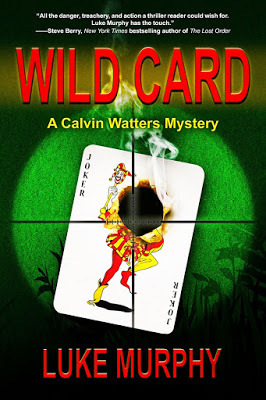
24. DOES THE PUBLISHING INDUSTRY FRUSTRATE YOU?
At times, yes. It’s an incredibly difficult industry to crack as a first time author. Major publishing houses won’t take many chances on new-comers so many writers are turning to small publishers, self-publishing and Print-on-demand. And it is such a slow-moving industry, sometimes it can be very discouraging.
25. DID YOU EVER THINK OF QUITTING?
Many times I asked myself, “What’s the point?” It took me six years to get my first book into print, and that seemed like a lifetime. But writing is only a hobby so I never expected to get rich from writing. I just write for the love of it, when I get some free time, so really I never thought of quitting a “hobby”.
26. WHAT WAS YOUR FAVOURITE MANUSCRIPT TO WRITE? WHY?
That’s hard to say for any author with more than one book out. Each one of my novels holds a special place with me, but if I HAVE to answer, I’m going to say my new book, WILD CARD. It was fun to write a sequel and work again with characters I enjoyed creating in the past.
27. HOW WOULD YOU DEFINE ‘SUCCESS’ AS A WRITER?
I used to think that it was earning a lot of money. We need money to survive, to support my family, to pay bills, to eat, to live, etc. But at the rate I’m on, I will never be happy (LOL). I think that writing something that you’re proud of, that people enjoy reading and that entertains, is just as important as financial success.
28. WHAT SHOULD READERS WALK AWAY FROM YOUR BOOKS KNOWING? HOW SHOULD THEY FEEL?
I want to be like my favorite authors. I want to entertain readers and allow them, like when I read, to escape reality and for a moment be in another place and time. I want to give them that level of freedom in their lives.
29. HOW MUCH THOUGHT GOES INTO DESIGNING A BOOK COVER?
My publisher takes care of the book cover. They ask me what I envisioned when I saw the cover in my head. I take into consideration everything that happens in the book, the plot, and what might attract a reader’s eye.
30. WHAT’S YOUR ULTIMATE DREAM?
To write for a living. To earn enough money from my books each year to strictly stay at home each day and write.
31. WRITING IS ONE THING. WHAT ABOUT MARKETING YOUR BOOKS AND YOUR BRAND? ANY THOUGHTS?
The big thing to remember is that selling books is a marathon, not a sprint. It takes time to build a platform and establish yourself in the social media world. Don’t try to get big too fast, go through the motions, do what it takes and don’t take any shortcuts. Build yourself on social media, take time to build relationships.
Once my publishing contract was signed, then the real work began, building my “platform”. I knew that when I signed on with a smaller publisher that the bulk of the promotion load would fall on my shoulders, and I accepted that.
I did four things quickly: created my own website, started a blog, and opened a Facebook page and Twitter account.
32. ARE YOUR BOOKS SELF-PUBLISHED?
No, I’m traditionally published by Imajin Books, a small publishing house in Edmonton, Alberta, Canada.
33. ANYTHING YOU’D LIKE TO ADD?
Ask me again in 5-7 years when my girls are teenagers. LOL.
I’m a true hometown boy. I moved back to the town I grew up in and bought my dad’s house, where I’m now raising my family. I’m teaching in the elementary school I attended and most of my friends and family are still in town.
My kids are in the same groups I was in, play the same sports I played, and are experiencing the same things I did as a kid.
I couldn’t be happier than I am right now…unless I became a bestselling author of course
34. WHAT WOULD BE THE VERY LAST SENTENCE YOU’D WRITE?
Thank you for taking the time to read my novel and I hope you enjoyed it.

WEBSITE
AMAZON

Clancy's comment: Thanks, Luke. I love Canada and have met many Canadians as I've traveled. Good luck with book sales.
I'm ...


Published on February 08, 2018 12:06
February 7, 2018
8 February 2018 - The Original Shakespeare and Company Bookshop in Paris

The Original Shakespeare and Company Bookshop in ParisG'day folks, Welcome to a bit of history.
Sylvia Beach was the founder of the Shakespeare and Company in 1945 in the apartment upstairs where she hid her books from the Germans during the occupation. They had closed her shop in 1940, allegedly because she would not sell her first edition of James Joyce’s “Ulysses” to a Nazi officer. Notice the American flag floating from her window. When Paris was liberated by the Americans, Ernest Hemingway “personally liberated” the store, but it would never re-open.

Just in case you’re not up to speed, the original Shakespeare & Co opened in 1919 at 8 rue Dupuytren in Saint Germain before moving to a bigger location a few streets over to 12 rue de l’Odéon. This was the original bookstore that became a second home to the members of the “lost generation” including Hemingway, F. Scott Fitzgerald, Gertrude Stein, James Joyce and so on.

Today, the facade is unrecognisable. There’s a small memorial plaque above the clothes boutique that now stands its place. This is the bookshop where the New Jersey expatriate, Sylvia Beach lent a young and penniless Ernest Hemingway his reading material and sold copies of his first book in 1923, having encouraged its publication. This is the shop he wrote about in the pages of his moveable feast.

The Shakespeare & Co we know today facing the Notre Dame along the river Seine was opened in 1951 by American ex-serviceman George Whitman, under the name Le Mistral. In the absence of Sylvia’s store, after which he modelled his, Whitman’s bookstore also became a focal point for literary culture in bohemian Paris, this time for the beat generation; nurturing the likes of Allen Ginsburg, Henry Miller and Anaïs Nin.

George befriended Sylvia in her retirement and while dining together one night in 1958, she publicly announced that she was handing the name to him for his bookshop. It wasn’t until Sylvia Beach died in 1964 that Whitman renamed the shop Shakespeare and Company in her memory. He described the name as “a novel in three words”.


Clancy's comment: Well, there ya go. Amazing how one tiny bookstore can attract some of the greatest authors.
I'm ...
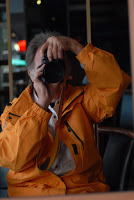

Published on February 07, 2018 12:01
February 6, 2018
7 February 2018 - Facts About Beluga Whales

Facts About Beluga WhalesG'day folks, I enjoy finding information about creatures I've never seen or heard of. This whale would be one of them. They are so similar to dolphins.
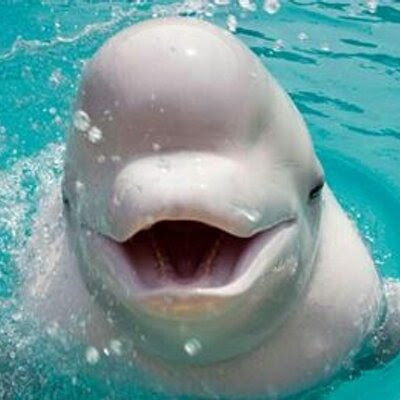
Adult beluga whales are easily distinguished by their often pure white skin, their small size and their lack of dorsal fin. Belugas have a broad, rounded head and a large forehead. They are well adapted to their arctic and sub-arctic environment, with a five-inch-thick layer of blubber and a tough dorsal ridge that helps them travel through sea ice waters. Belugas are toothed whales. They have broad, paddle-like flippers and notched tails.Because beluga whales eat marine species that are most common each season, they play an important role in the health of the overall ecosystem. They are also one of Alaska’s most well-known marine animals and a key draw for tourists and residents traveling along the coastal areas in the state.
Diet
Beluga whales are opportunistic feeders. They feed on salmon, eulachon, tomcod, smelt, char, rainbow sole, whitefish, saffron and arctic cod, herring, shrimp, mussels, octopus, crabs, clams, mussels, snails and sandworms.
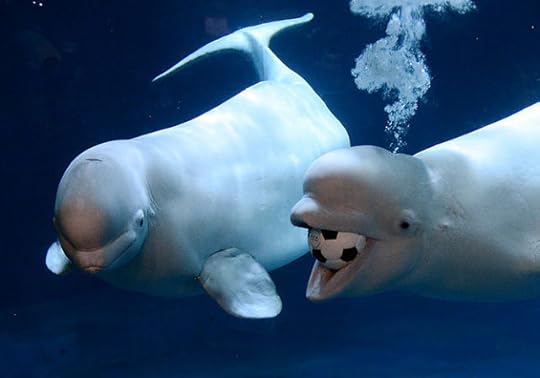
Population
Though difficult to obtain an accurate count because they are so widely distributed, it is estimated that beluga whales number in the hundreds of thousands.
Habitat & Range Beluga whales are distributed throughout seasonally ice-covered arctic and subarctic waters. They inhabit waters off the shores of Russia, Greenland, Canada, Norway and the United States (Alaska). Genetic research has determined that there are five beluga whales stocks within U.S. waters: Cook Inlet, Bristol Bay, eastern Bering Sea, eastern Chukchi Sea and Beaufort Sea.

Behaviour
Belugas forage for food in the water column and on the seabed. This typically takes place at depths of up to 1,000 feet, but they can dive to at least twice this depth. Belugas congregate and travel in groups from 2-3 to as many as several hundred. Some are migratory within their limited range, while others remain residents of a particular area. They are found close to shore or in the open sea. During the summer months in some areas they gather in the estuaries of rivers to feed and calve.Belugas use sound to find their prey. They also use sound to communicate and navigate by producing a variety of clicks, chirps and whistles.
Reproduction
Young belugas are usually dark grey in color. The grey steadily lightens as they grow up - reaching their permanent color by the age of seven for females and nine for males. Calves nurse for about two years.

QUICK FACTS:
Mating Season: Late winter - early spring
Gestation: 15 months
Number of offspring: 1 calf
Scientific name: Delphinapterus leucas
Length: Males,15 feet; females up to 14 feet
Weight: Adult males 3,000 lbs; females 2,000 lbs.
Lifespan: 30 - 50 years
 Clancy's comment: Yep, I'd love to be up close and personal with these guys - with a camera slung around my neck.I'm ...
Clancy's comment: Yep, I'd love to be up close and personal with these guys - with a camera slung around my neck.I'm ...
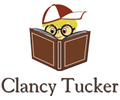
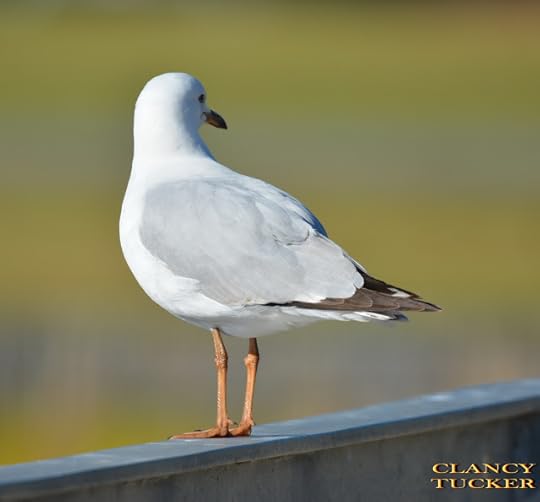
Published on February 06, 2018 11:57
February 5, 2018
6 February 2018 - MACRO PHOTOGRAPHY

MACRO PHOTOGRAPHY
G'day folks,
Welcome to some fine samples of macro photography, taken by clever photographers.











Clancy's comment: To me, macro photography is a great way for humans to observe the complexities and beauty of nature. Only through a lens, can you really admire the magnificence. Now, here some of mine:
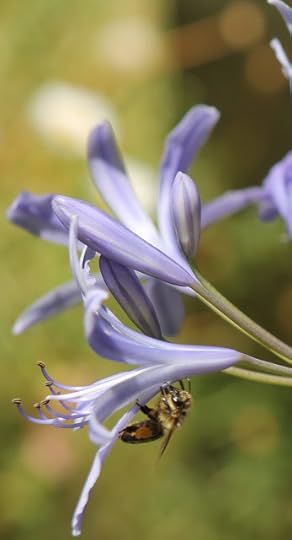

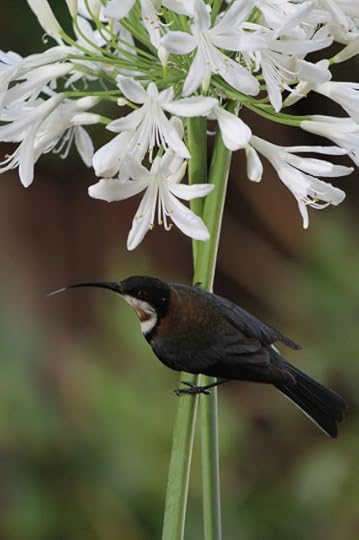

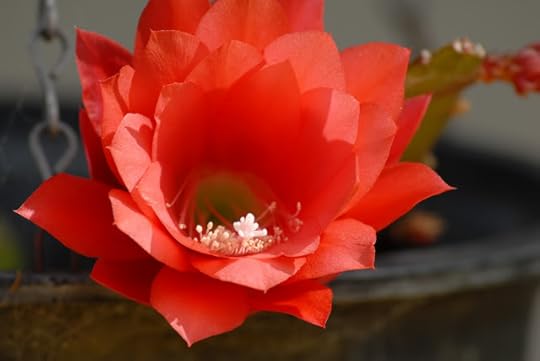
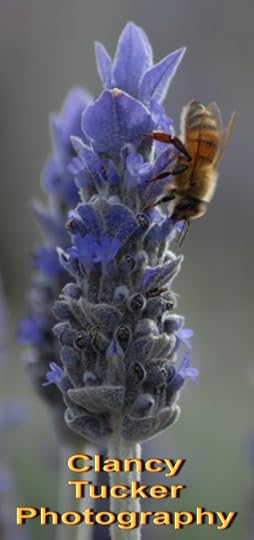

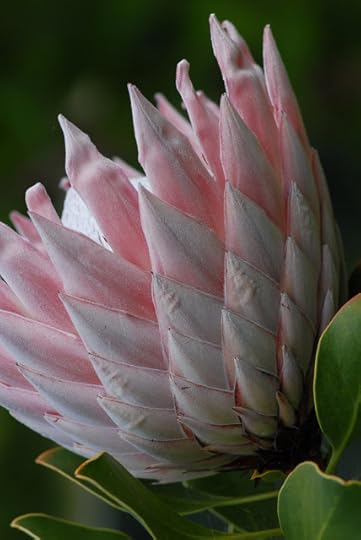
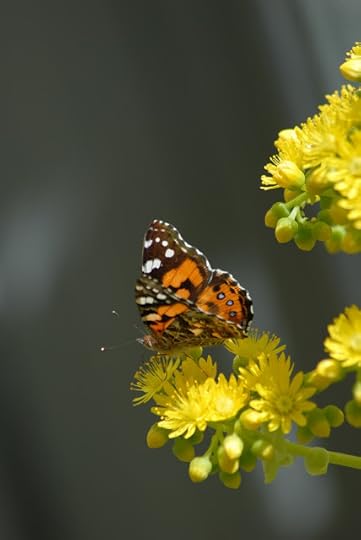
I'm ...
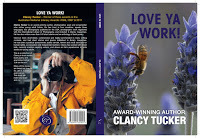

Published on February 05, 2018 12:18
February 4, 2018
5 February 2018 - LOST WORDS

LOST WORDS
G'day folks,
Welcome to some words that seem to have gone forever.
miliaceous adj 1684 -1890 like millet or the millet-seed This miliaceous gift will keep our nation from starvation, but will not appease us.
mingent adj 1685 -1685 discharging urine The mingent dog amused the children but not the owner of the flower garden.
misqueme v 1395 -1658 to displease; to offend If my actions misqueme you or your friends, you need only leave me alone.
mitescent adj 1727 -1727 growing mild You're becoming mitescent in your old age, and can hardly stomach conflict any more.
mochlic n 1657 -1753 drastic purgative medicine This mochlic remedy is worse than the disease, but at least it will be over quickly.
modernicide n 1774 -1774 killing or killer of modern people While the Luddites were radical traditionalists, they never engaged in modernicide.
molrowing n 1860 -1896 caterwauling; cavorting with prostitutes Her son is a molrowing vagabond without any social graces, much to her shame.
montivagant adj 1656 -1658 wandering over hills and mountains The montivagant hiker crossed the Alps with ease but was stymied by the Andes.
morsicant adj 1891 -1891 producing the sensation of repeated biting or pricking After sitting for several hours, I had a terrible morsicant pain in my rear end.
mowburnt adj 1548 -1900 of crops, spoiled by becoming overheated The heat wave last August left us with heaps of mowburnt and useless crops.
mulcible adj 1656 -1656 able to be appeased Despite his promises of food, the crowd was not mulcible and began to riot.
mulomedic adj 1678 -1678 relating to the medical care of mules The doctor's mulomedic abilities were of enormous importance to the trek's success.
murklins
in the dark She stumbled murklins about the house until she found the light switch.
myriander adj 1693 -1693 consisting of ten thousand men Her myriander host of suitors never figured out that she was a lesbian.
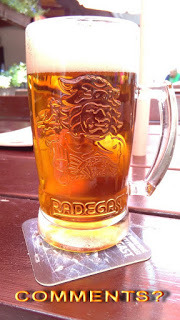
Clancy's comment: I've never heard of most of these, but I have seen a few mingent dogs in my time.
I'm ...


Published on February 04, 2018 12:12



